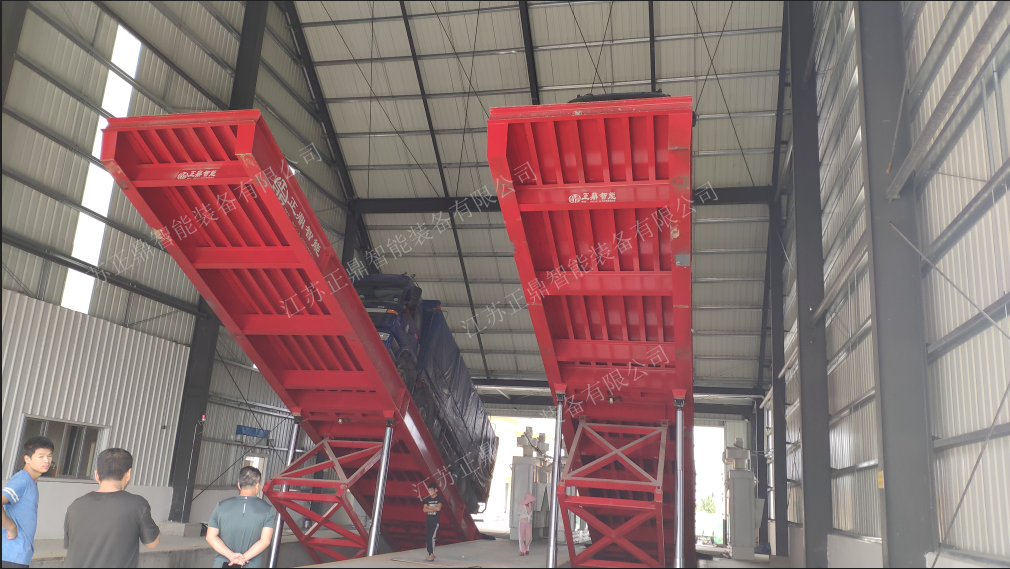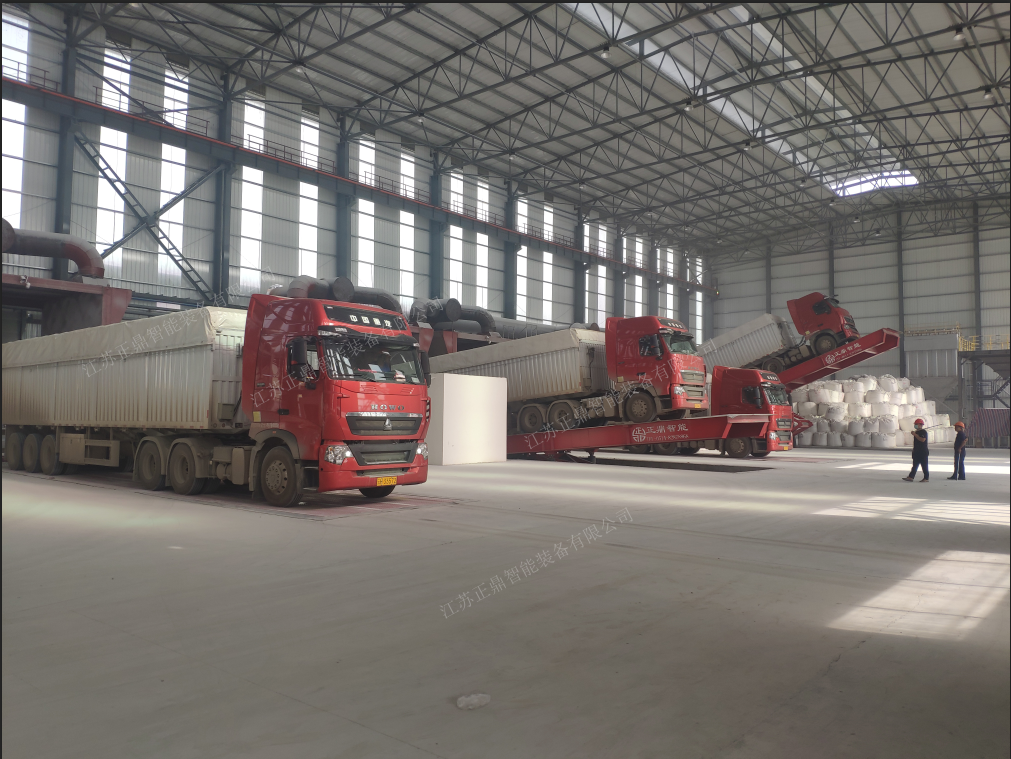Essential Pre-Operation Safety Precautions
Daily Walk-Around Inspection Protocol
A daily walk around check is pretty much a must when it comes to keeping a rear truck dumper running safely. Start by looking closely at the dumper body itself for any cracks, dents or other damage that might have happened recently. Don't forget to check those hydraulic hoses and tanks too since even small leaks can really mess with how well everything works. Lights, mirrors and signal indicators need checking as well, especially before heading out in foggy weather or at night when visibility drops off. Doing these basic checks regularly does more than just keep people safe on site it actually helps equipment last longer between repairs. Most experienced operators know from hard experience that skipping regular inspections often leads to bigger problems down the road, so making time for these routine checks pays off in both safety and long term cost savings.
Hydraulic System Integrity Checks
Keeping the hydraulic system in good shape is really important when working with rear truck dumpers. First thing I do is check those hydraulic lines looking for any wear spots or cracks since even small problems can cause big headaches down the road. Checking oil levels matters too - not just how much there is but also its condition. Dirty or old fluid will mess with how everything works properly. Then comes actually putting the system through its paces. If the hydraulics respond slowly or feel sluggish during testing, that usually means something isn't right underneath. Fixing these kinds of issues before they get worse saves money on expensive repairs later on and keeps everyone safer around the equipment. Doing routine maintenance checks makes all the difference in keeping these complicated hydraulic setups running smoothly day after day.
Verifying Brake Functionality and Tire Conditions
Keeping brakes working properly and checking tire condition remains absolutely vital when running rear truck dumpers safely. First things first, I always run through a quick brake check to see how responsive they feel and whether stopping distances match what's expected under normal conditions. After that comes looking at tire pressure levels and measuring tread depth against specs to avoid those dreaded blowouts during operation. Something worth noting too is spotting uneven tire wear patterns since this often points toward alignment problems or something else wrong mechanically speaking. All these routine checks help cut down accident risk significantly while maintaining safety standards across the board. When crews take time to thoroughly inspect both tires and brakes before heading out, everyone stays safer onsite including equipment itself from getting damaged unnecessarily.

Personal Protective Equipment (PPE) Requirements
Mandatory Safety Gear for Operators
Getting workers properly outfitted with required safety equipment makes a big difference when it comes to avoiding injuries at work sites. The basics include things like hard hats for head protection, gloves to guard hands from cuts, safety glasses for eye protection, and those heavy duty boots with steel toes that keep feet safe from dropped tools or materials. But just having the gear isn't enough either. Workers need training on how to actually use and take care of their protective equipment so it works as intended, cutting down on potential accidents across the board. Don't forget about high visibility clothing too. Those bright vests and jackets really stand out, making sure everyone can see each other clearly even when things get hectic around construction zones or manufacturing floors where multiple teams are moving simultaneously.
Specialized Protection for Hazardous Environments
When workers find themselves in dangerous situations, they need proper protection from all sorts of threats. Respirators and face shields come into play especially around chemicals or where the air just doesn't smell right. Companies really ought to think about what kind of gear people need during bad weather too. Think about those icy days or torrential downpours that make everything slippery and visibility terrible. Training matters a lot here. Workers must know not only which equipment applies to their situation but also how to put it on properly and check if it works as intended. Getting this right means staff members stay safe even when conditions suddenly change, keeping operations running smoothly despite whatever Mother Nature throws at them.
Vehicle Setup and Stabilization Procedures
Ensuring Level Ground for Operations
Getting the truck positioned on flat ground matters a lot for safe operation when using rear dumpers. Operators need to take time checking out where they're going to dump, because if the ground isn't even, things get unstable real quick and there's a good chance of tipping over. Most standard rear dump trucks come with built-in level indicators that help confirm proper placement before starting to unload materials. Creating some sort of routine check list that includes looking at the ground conditions makes all the difference in setting everything up properly. This kind of systematic approach cuts down on hazards without being too complicated or time consuming.
Proper Wheel Chock Placement Techniques
Wheel chocks stop vehicles from rolling away when working with dump trucks, which is really important for safety on job sites. To get this right, workers need to know where to place them based on what kind of rear truck dumper they're dealing with and its weight class. The size and material matters too big time. For lighter loads, standard rubber chocks work fine, but heavier operations require industrial grade ones made of denser materials. Terrain plays a role as well soft ground needs larger contact area than hard surfaces. Many companies find that showing pictures or diagrams helps crews understand proper placement techniques better than just telling them. Visual guides highlighting good vs bad positioning across different types of ground conditions make all the difference in following safety protocols consistently throughout the worksite.
Parking Brake Engagement Protocol
The parking brake needs to stay engaged anytime a dump truck sits still, otherwise there's always the risk of unexpected rolling and serious safety issues for whoever is operating the machine. Operators really need to check how well their parking brakes work regularly, particularly right before stepping away from the cab for any reason. Testing isn't just routine maintenance it's actually life saving stuff. Many drivers accidentally leave the parking brake partially set or depend too much on systems that have seen better days. These kinds of errors happen all the time on job sites across the country. Getting familiar with proper parking brake procedures isn't just good practice it's essential for keeping everyone safe around heavy equipment.
Safe Loading Procedures for Rear Truck Dumpers
Establishing Secure Loading Zones
Creating safe loading areas really matters when it comes to avoiding accidents and keeping operations running smoothly. To start with, companies need to find good spots for those rear truck dumpers where there's minimal chance of something going wrong. A proper look around the site helps figure out if these areas have enough space without any tripping hazards or clutter getting in the way. Then adding some kind of barrier system makes sense too. Maybe temporary cones work fine sometimes, other times permanent fencing might be better depending on what's happening at the site. This keeps people who shouldn't be there safely away from active loading zones. Beyond worker protection, these basic steps actually make day to day operations run much better because everyone knows where they stand.
Communication Protocols with Loading Equipment
Good communication while loading stuff around the site really matters when it comes to keeping people safe and getting things done efficiently. We need to set up solid ways for folks to talk to each other during these operations. Most sites use hand signals or radios between the operator running machinery and those watching from the ground. When workers know what those signals mean, everyone stays aligned and there's less chance something goes wrong. Some companies even have special training sessions where they practice recognizing different hand signs. And don't forget regular safety chats either. These meetings aren't just checkboxes on a form. They're opportunities to go over what works, what doesn't, and make sure everyone understands the basics before starting another day's work.
Load Distribution and Securement Checks
Getting the weight right and making sure everything stays put is really important for keeping vehicles stable and avoiding dangerous shifts while moving stuff around. When working with rear truck dumpers, spread out the load as evenly as possible across the bed. This simple step makes a big difference in how stable the whole rig feels when driving. Don't forget to strap things down properly too. Use good quality straps and make sure they're tight enough so nothing can move around during transit. Some companies have started using checklists at the loading dock to double check that everything's secured properly before heading out. These quick checks help catch problems early and keep both workers safe and expensive equipment protected from damage caused by shifting cargo.
Operational Safety During Movement
Site Navigation and Traffic Management
Getting around construction sites safely depends heavily on good traffic management and clear navigation routes. When dealing with complicated job sites where heavy machinery moves alongside workers, having solid plans in place makes all the difference. Setting up separate lanes for trucks and people helps prevent collisions and keeps things running without constant interruptions. Most companies find that regular safety briefings make a big impact too. These sessions keep operators sharp about what's happening around them and remind everyone why following proper procedures matters so much. The result? Fewer stoppages due to near misses, better workflow throughout the day, and ultimately a safer environment for everyone involved in the project from start to finish.
Speed Control on Inclines and Rough Terrain
Speed control matters a lot when driving on hills or rough ground because otherwise there's a real risk of rollover accidents. Setting proper speed limits makes sense for different types of terrain if we want to keep vehicles under control and stable during operation. Training workers how to handle their speed properly on both uphill and downhill stretches needs to be part of any good safety program. Looking at what happened in past incidents where drivers went too fast shows just how critical this issue really is. Take those lessons from actual accidents as warnings rather than just theory. Stay alert behind the wheel and follow established safety rules no matter what kind of terrain presents itself along the route.
Blind Spot Awareness and Spotter Use
The blind spots around dump trucks create serious hazards that need proper attention if we want to keep everyone safe on site. Operators must know exactly where these dead zones are located around their vehicles so they can avoid dangerous situations. Good training programs don't just tell workers about blind spots but actually show them through demonstrations and hands-on exercises. When there's heavy traffic around loading docks or material piles, having someone outside the cab watching constantly makes all the difference. These spotters aren't just extra eyes either they communicate clearly with drivers using agreed signals and stay alert for any unexpected movements. Companies that build a work environment where operators aren't afraid to call for help when needed tend to see fewer accidents overall. Workers who speak up about concerns contribute directly to better safety records and smoother operations across construction sites.
Handling Frozen or Sticky Material Loads
Clearing the Unloading Zone Procedure
Good unloading zone practices really matter for keeping everyone safe during those big dump operations. Before any dumping happens, we need to make sure no one is hanging around in that area and clear out anything that might get in the way. This helps prevent accidents from trucks tipping over or becoming unstable somehow. A quick walk through the unloading spot can catch problems early on too many times folks forget about things like bumpy ground or power lines above. Spotting these issues ahead of time means we can fix them before anyone gets hurt. We also should have some kind of signal system so workers know exactly when it's okay to come back into the area after dumping is done. These basic steps don't just stop accidents they actually keep our whole operation running smoother day after day without unnecessary delays.
Controlled Bed Raising Sequence
Getting the bed raising sequence right makes all the difference when it comes to safe and efficient dumping operations. Operators need to know exactly how to raise the truck bed step by step so everything goes smoothly without sudden jerks or unexpected movements. Safety first folks stay well back from the edge of the truck bed while materials are being unloaded because nobody wants to end up with serious injuries just from getting too close. Workers should also keep an eye out for anything unusual happening with the equipment during those lift cycles. Strange noises, odd vibrations, or unexpected delays could signal trouble ahead. Companies must have clear plans ready to handle whatever problems pop up during operation. Following through on these basic safety measures helps keep trucks stable and prevents one of the most dangerous situations we see on job sites every day: trucks tipping over.
Handling Frozen or Sticky Material Loads
When dealing with frozen or sticky cargo, operators need to think outside the box to avoid problems during transport. For frozen materials, warming them up before loading makes all the difference. Some companies even install heated compartments in their trucks for this exact reason. We've seen plenty of accidents where trucks tipped over because ice built up inside the load area, so taking steps to prevent that buildup is absolutely essential. Sticky substances present their own headaches too. Materials like wet clay or certain types of sludge tend to stick to truck beds no matter what. The solution? Special coatings on the interior surfaces or investing in trucks with smoother floors designed specifically for these kinds of materials. Getting the right equipment upfront saves time and money down the road while keeping everyone involved much safer throughout the entire operation.
FAQ
What does a daily walk-around inspection involve?
A daily walk-around inspection for an ordinary rear truck dumper involves visually examining the dumper's body for visible damage, checking hydraulic systems for leaks, and ensuring lights, mirrors, and signals function correctly.
Why is hydraulic system integrity important?
The integrity of a hydraulic system is essential for maintaining the performance and preventing malfunctions of rear truck dumpers. Regular checks help to avoid operational failures and potential accidents.
How can PPE contribute to safety on job sites?
Personal Protective Equipment (PPE) such as hard hats, gloves, and steel-toed boots protect operators from injuries like falling objects and sharp materials, significantly enhancing safety conditions on job sites.
What are the most common safety measures for site navigation?
Effective site navigation involves comprehensive traffic control measures, establishing designated pathways for vehicles, and regular training for operators to enhance awareness and minimize accident risks.

